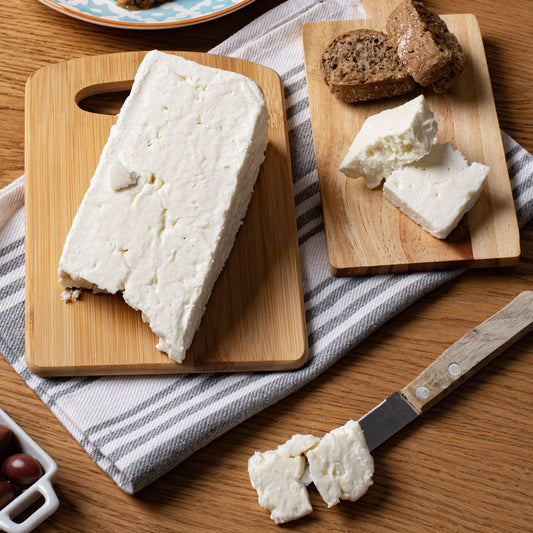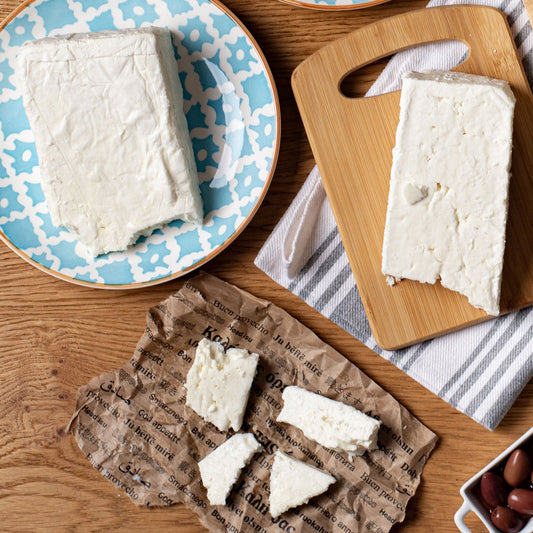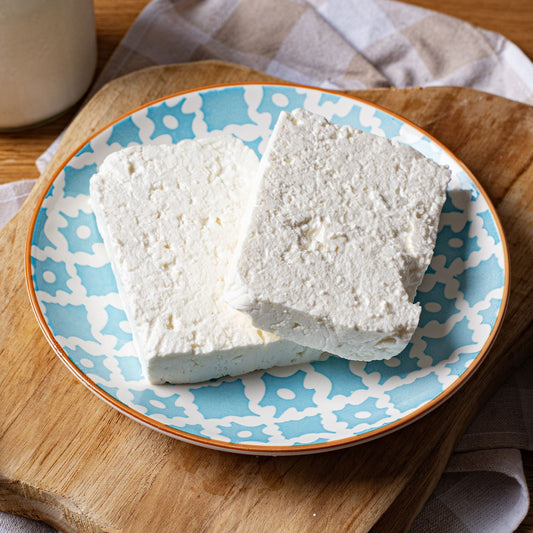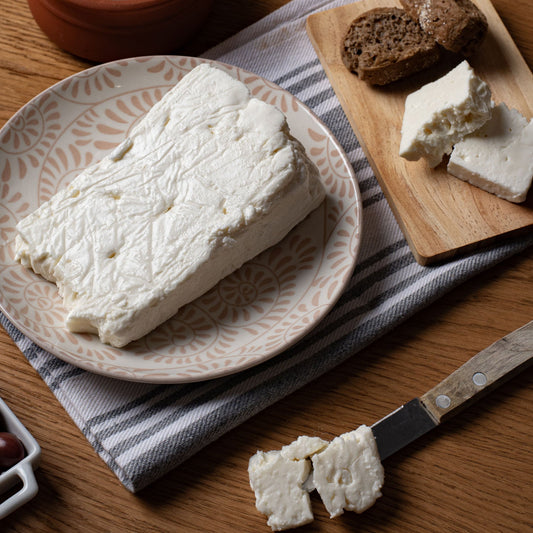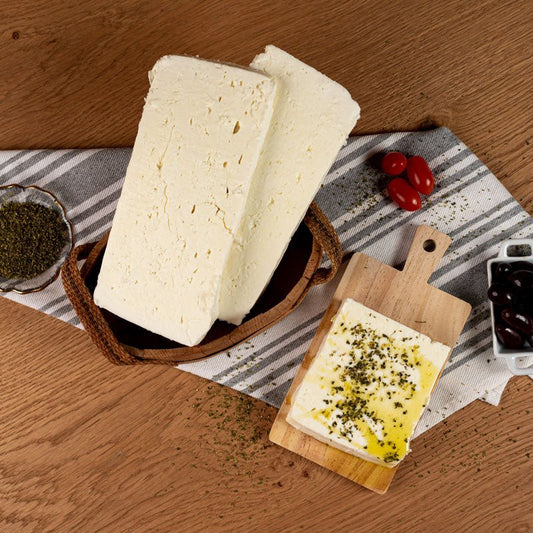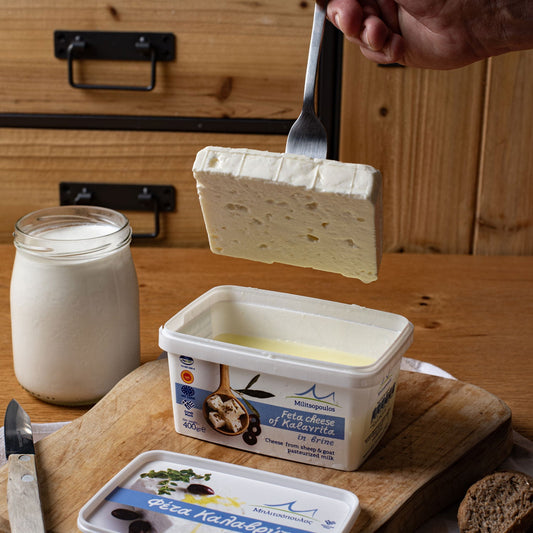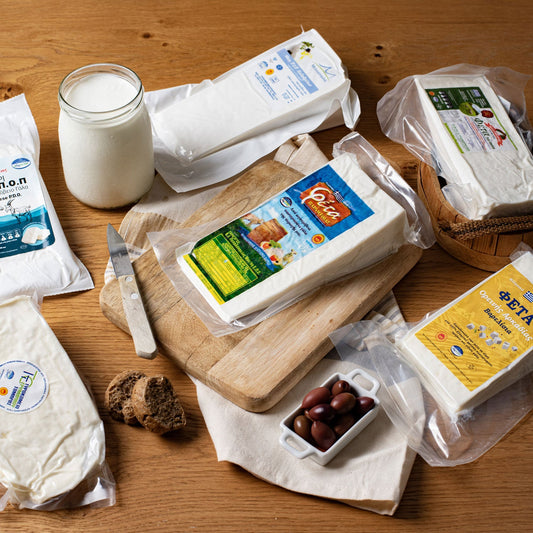🧀 Feta Cheese: The Authentic Taste of Greece Straight to Your Table
What Is Feta Cheese?
If you’ve ever tasted feta cheese, you know there’s nothing quite like it — that perfect balance of salty, tangy, and creamy flavors that transport you straight to a sunny Greek island. But not all feta is created equal. Real Greek feta cheese is so much more than just a cheese; it’s a piece of tradition, crafted with love and care.
Feta cheese is a cheese made from sheep’s milk, sometimes blended with a little goat’s milk for extra depth. It’s aged in brine, which gives it that unmistakable salty and tangy kick. Whether crumbled on a salad or baked into a warm dish, feta feta (yes, the real deal!) brings a taste of Greece to every bite.
Why Choose Authentic Greek Feta Cheese?
When you choose real Greek feta cheese, you’re not just buying cheese — you’re bringing a part of Greece into your home. Think of the rolling hills where the sheep and goats graze freely, the fresh mountain air, and the artisans who have been making feta for generations. That’s what makes feta so special.
Here’s why real Greek feta cheese is unlike any other:
- 🌿 Made with care from sheep’s and goat’s milk raised in the Greek countryside.
- 🧂 Naturally salty and tangy thanks to traditional brining methods.
- 🧀 Creamy yet crumbly — perfect for topping, baking, or enjoying on its own.
- 💪 Packed with protein and calcium, a delicious way to nourish your body.
- 🌞 A key ingredient of the Mediterranean diet, one of the healthiest in the world.
How Is Feta Cheese Made? (The Traditional Way)
Making feta cheese the authentic way is a true labor of love — and it shows in every bite. Here’s how feta cheese is made in Greece, following time-honored traditions:
- It starts with fresh, local sheep’s and goat’s milk from animals that roam freely, eating natural herbs and grasses.
- The milk is gently warmed and curdled using traditional rennet — no shortcuts here.
- Once the curds form, they are hand-cut, drained, and pressed into blocks.
- Then comes the magic: the cheese is aged in brine, developing its signature salty and tangy flavor over at least two months.
This process is what makes real Greek feta stand out from the rest — cheese made with patience, tradition, and respect for nature.
Bring Greece to Your Kitchen: Where to Buy Authentic Feta Cheese
At Greek Flavours, we believe good food should tell a story — and our feta cheese tells the story of Greece.
We partner directly with small Greek dairies that have been making feta for generations. Every piece of cheese we offer is:
- ✅ Authentic Greek PDO feta cheese, made under strict quality standards.
- ✅ Crafted from 100% natural sheep’s and goat’s milk, with no artificial additives.
- ✅ Packed fresh and shipped quickly to preserve its incredible flavor.
- ✅ Available for fast delivery across the United States — so you can enjoy a piece of Greece wherever you are.
How to Enjoy Feta Cheese: Simple, Delicious Ideas
Wondering how to bring feta cheese into your everyday meals? Here are some of our favorite ways to enjoy it:
- 🥗 Greek Salad: Juicy tomatoes, crisp cucumbers, olives, and a generous crumble of feta.
- 🍅 Baked Feta Pasta: The internet’s favorite recipe — even better with real Greek feta!
- 🥧 Spanakopita (Spinach Pie): Flaky pastry filled with spinach and tangy feta.
- 🍯 Appetizer Platter: Pair feta with honey, nuts, and fruit for a sweet-salty contrast.
- 🌶️ Stuffed Peppers or Tomatoes: Feta mixed with herbs for a Mediterranean twist.
Experience the Real Taste of Greece
There’s something about real feta cheese that just feels right — simple, genuine, and full of flavor. Whether you’re reliving memories of a Greek holiday or discovering these incredible flavors for the first time, authentic feta cheese is a taste you’ll never forget.
So go ahead — bring home a slice of Greece, and savor the warm, welcoming flavors that only real Greek feta cheese can offer.
Read Less🧀 Feta Cheese: The Authentic Taste of Greece Straight to Your Table
What Is Feta Cheese?
If you’ve ever tasted feta cheese, you know there’s nothing quite like it — that perfect balance of saltyRead More



